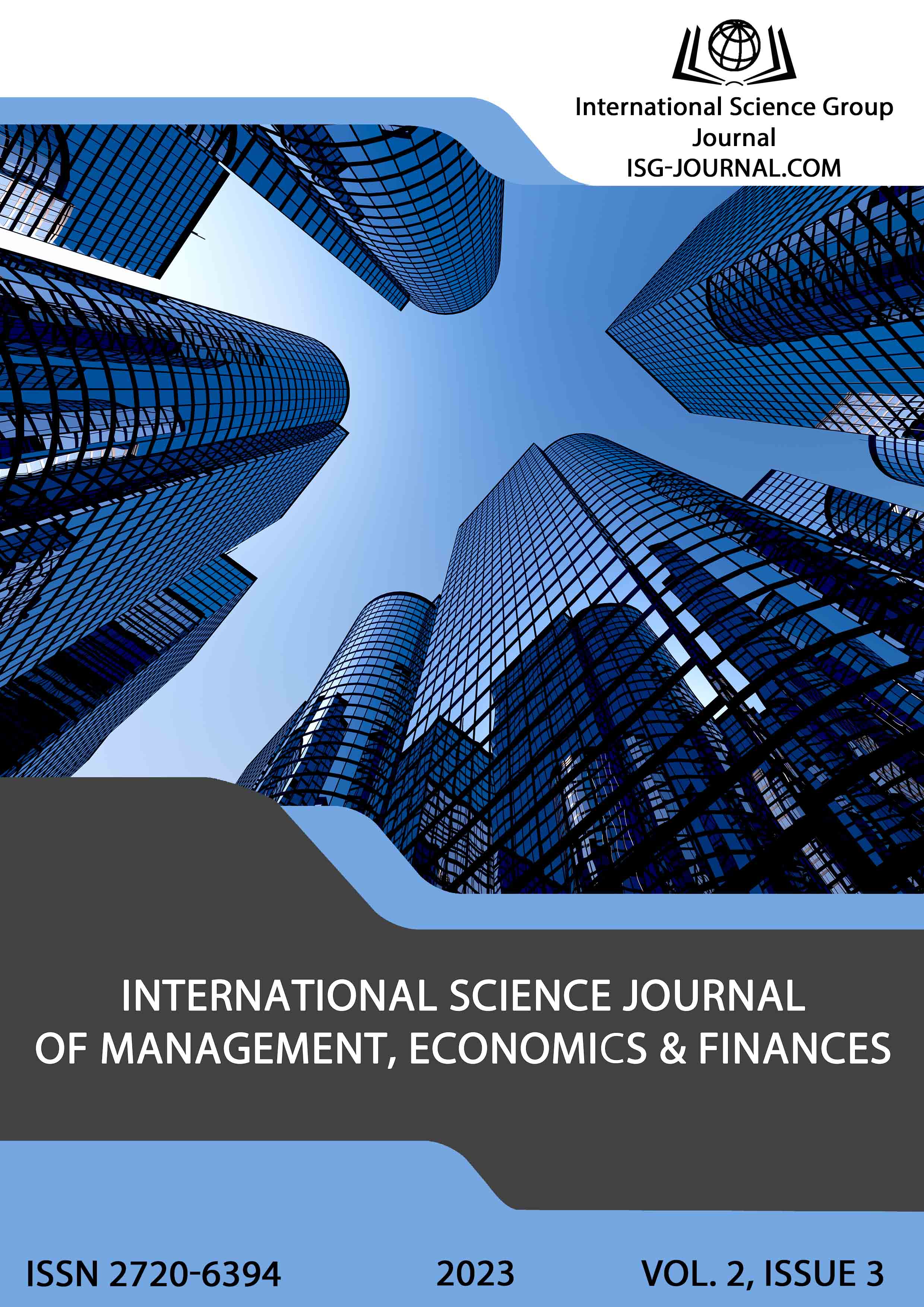Convergence and divergence processes of countries economic development under globalization
DOI:
https://doi.org/10.46299/j.isjmef.20230203.02Keywords:
globalization, deglobalization, convergence, divergence, global imbalances, economic development, integration, COVID-19, invasion to UkraineAbstract
The article analyses the degree of national economies interconnection and interdependence on the basis of calculation of the dynamics of β-deviation and δ-deviation indicators of the group of developed countries and the group of developing countries for the period 1995-2021 It is proved that the processes of divergence between countries, the asymmetry of their development and the growth of global disproportions, as well as the processes of convergence, manifested in the formation of individual clusters, are taking place simultaneously, which requires additional in-depth studies at the country level.
References
Abodunrin O., Oloye G., Adesola D. (2020). Coronavirus pandemic and its implication on global economy. International Journal of Arts, Languages and Business Studies, vol.4, pp. 13-23.
Barro R.J., Sala-i-Martin X. (1991). Convergence across States and Regions. Brookings Papers on Economic Activity, vol. 22(1), pp. 107-182.
Baumol W., Nelson R., Wolff E. (1994). Convergence of Productivity: Cross-National Studies and Historical Evidence. New-York: Oxford University Press, pp. 20-61.
Білорус О. (2015). Глобальна неоконвергенція транзитивних, трансформаційних і авангардних соціально-економічних систем. Економічна теорія. 2015. №3. С. 56-64.
Diversity, Equity and Inclusion 4.0. (2020). World Economic Forum. A toolkit for leaders to accelerate social progress in the future of work. URL: http://www3.weforum.org/docs/WEF_NES_DEI4.0_Toolkit_2020.pdf
Фукуяма Ф. (2015). Конец истории и последний человек. M.: АСТ, 576 с.
Гражевська Н.І., Шемахіна І.В. (2019). Конвергентно-дивергентний розвиток національних економік в умовах фінансіалізації. Бізнес Інформ. Вип. №5. Харків. C. 14–19.
Онищенко В. (2020). Генезис світового економічного порядку. Зовнішня торгівля: економіка, фінанси, право. No. 2. С. 38-55.
Pritchett L. (2015). Can Rich Countries be Reliable Partners for National Development. Journal of International Relations and Sustainable Development, vol. 2, 11 p.
Quah D. (2011). The global economy’s shifting centre of gravity. Global Policy, vol. 2, no. 1, pp. 3-9.
Reinert E. (2008). How Rich Countries Got Rich… and Why Poor Countries Stay Poor. Anthem Press India and Third World Network. 398 p.
Скрипник С., Процевят О., Воронова О. (2022). Особливості регулювання зовнішньоекономічної діяльності в умовах воєнного стану. Економіка та суспільство, вип. 38.
Solow R. M. (1956). A Contribution to the Theory of Economic Growth. The Quarterly Journal of Economics, vol. 70, no. 1, pp. 65-94.
Stigler G.J. (1971). The Theory of economic regulation. Bell Journal of Economics and Management Science, no. 2, pp. 3-18.
United Nations Conference on Trade and Development (UNCTAD). Data Centre. URL: https://unctadstat.unctad.org (Accessed 12.04.2023).
Якушева О. (2022). Законодавчі ініціативи у сфері конвергенції регіонів: виклики сучасності. Економiка i органiзацiя управлiння. № 2 (46), 2022. С. 148-159.
Downloads
Published
How to Cite
Issue
Section
License
Copyright (c) 2023 Iryna Shemakhina

This work is licensed under a Creative Commons Attribution 4.0 International License.






